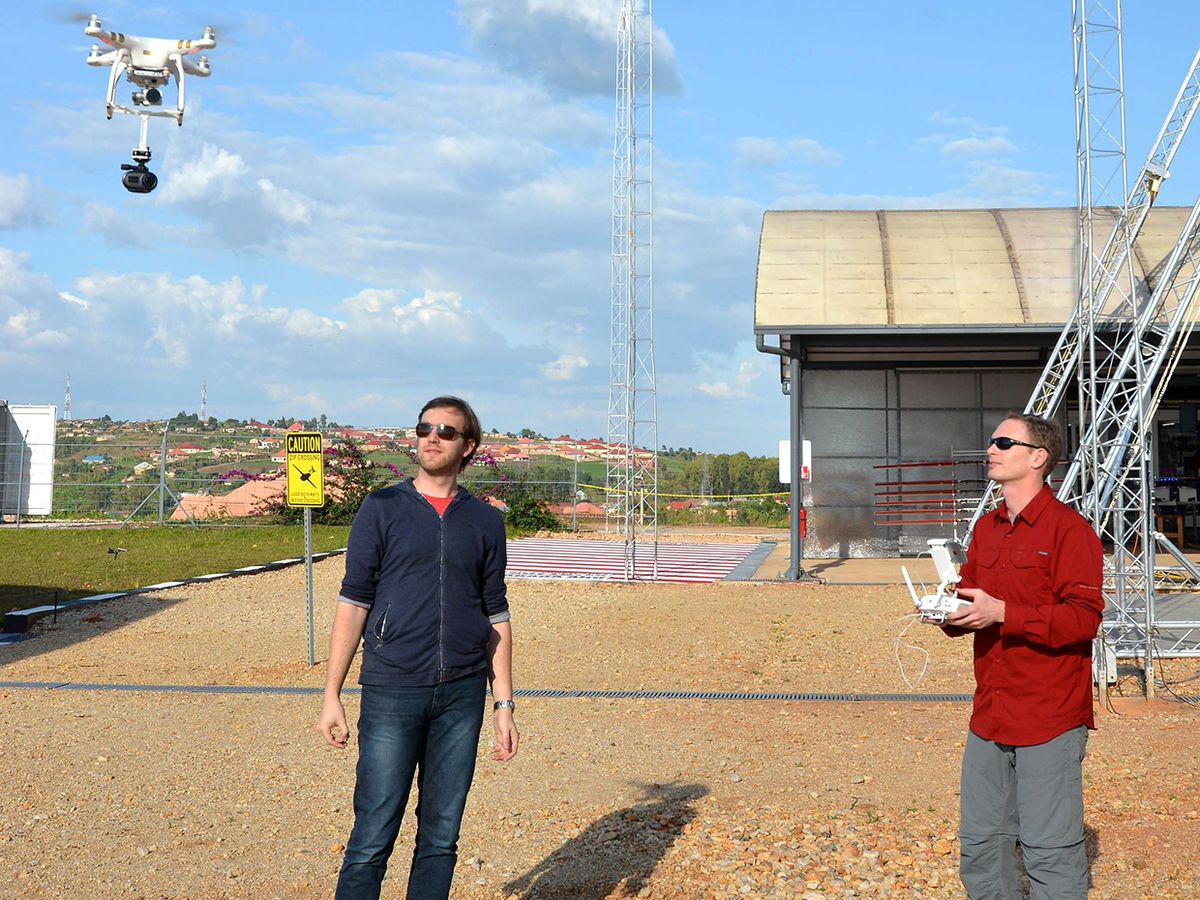Reporters used to head out into the field with nothing but a notebook. But when IEEE Spectrum associate editor Michael Koziol [left] and contributing editor Evan Ackerman [right] traveled to East Africa last October, they had plenty more gear to schlep. In addition to their laptops and digital recorders, they brought two DJI drones and an assortment of 360-degree video cameras.
The trip was part of an experiment in immersive storytelling. Koziol and Ackerman journeyed through Rwanda and Tanzania to report on pioneering companies that are using small consumer drones for such tasks as delivering medical supplies and surveying roads. The two gathered material for several articles, including a feature story about a company called Zipline that’s delivering blood to Rwanda’s rural hospitals.
They also sent their own drones aloft bearing their cameras, capturing footage for two videos included in our special report on drones in East Africa. One video brings viewers inside Zipline’s operations in Rwanda, the other, which will be published on Thursday, takes to the air with Tanzania’s drone startups. In these 360-degree videos the viewer can rotate the point of view in a complete circle, to see everything on all sides of the camera. That maneuvering is particularly fun when the camera is flying high over the landscape.
The reporters had to overcome various logistical and technical challenges to get their shots. First they had to navigate the maze of regulations that govern the flying of consumer drones, rules that differ from country to country. Because the technology is so new, the rules and procedures are a work in progress. And filming with the 360-degree cameras presented novel technical issues, says Ackerman, as he and Koziol had to consider everything that the viewer might see in the shot. There were two questions they often asked themselves, Ackerman says: “How do we make the whole scene interesting? And how do we hide from the camera?”
The technology and the travel were funded by a generous grant from the IEEE Foundation. We thank the foundation for supporting Spectrum’s mission: covering emerging technology that can change the world, and using cutting-edge technology to do so.
A version of this post appears in the May 2019 print magazine as “Flying Into the Unknown.”
